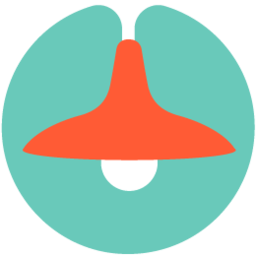Meet the specialists
I have training in Sandtray through an online program called the Southern Sandtray Institute. I've also attended a Sandtray summit to get more hands on experience in sandtray. I have experience using sandtray with adults to help bring about deep change and healing. Sandtray helps clients use both parts of their brain, which can be especially helpful for grief and trauma. On top of this, sandtray can be a refreshing change to traditional talk therapy or when talking isn't working.
— Robin Poage, Clinical Social Worker in , ILI am recognized as an expert in Sand Tray Therapy, a powerful therapeutic modality that utilizes a sandbox and miniature figures to facilitate self-expression, exploration, and healing. My expertise is anchored in specialized training under leading figures in the field, specifically Amy Flaherty Hood of the Southern Sandtray Institute and Terry Kottman of the Encouragement Zone.
— Adria Booth Tyler, Licensed Mental Health Counselor in West Des Moines, IASand tray therapy is a form of expressive therapy where individuals create scenes in a sandbox using miniature figures to represent their inner thoughts and emotions. This method helps clients visually and symbolically express and explore deep psychological conflicts and traumas, facilitating understanding and healing in a non-verbal, creative way. It’s especially useful for accessing and resolving issues that might be difficult to articulate, providing a powerful medium for emotional insight.
— Rose Dawydiak-Rapagnani, Therapist in ,I received my training in Sand Tray Therapy from the Institute of Playful Healing and am working toward certification. I am trained and experienced in use of sand tray with individual trauma work, children and adolescents, couples, families and groups.
— Mary Bernard, Licensed Mental Health Counselor in DeLand, FLSand Tray Therapy is a wonderful therapy I have seen support every age with a great many of issues and wants. On a technical level Sand Tray Therapy is the best mode of helping find greater meaning, resources and new ways forward to life's issues. This is because it is the chance to allow your creativity - whether you feel its there or not - to find the problem as it lives in your personally and form there builds the bridges to solutions and a more integrated life.
— Erik Johnston, Licensed Professional Clinical Counselor in Overland Park, KSI am trained in Sand Tray therapy and believe in the power of expression without words. This modality can be a great way for clients to explore implicit thoughts and feelings!
— Laura Wagstaff, Associate Professional Clinical Counselor in Birmingham, ALI am a registered play therapist . I utilize the sand tray to help externalize session content giving it more depth. I integrate the Gottman interventions with the sand tray.
— Kimberlee Daughtry, Licensed Professional Counselor in Shavano Park, TXI trained in Sand Tray Tberapy in 2016 and I utilize this in my office with adult clients who are "stuck in their heads" and need to connect with the more creative parts of their brain.
— Melissa Wright, Licensed Marriage & Family Therapist in Aliso Viejo, CAWorking with sandtray and play therapy for kids and teens offers a powerful, creative medium for exploring emotions, resolving conflicts, and fostering self-awareness. In sandtray therapy, children and adolescents use miniature figures and objects to create scenes in a tray filled with sand, symbolically representing their inner world. It’s particularly effective in helping clients process trauma, navigate social challenges, and build emotional resilience to work through their identified needs.
— Melissa Wright, Licensed Professional Counselor in Kansas City, MOEspecially for children, using objects in a sand tray can be a more effective pathway for expression than hard-to-find words. Relational configurations in the sand can also enable experimenting with moves that can get us unstuck and bring relief.
— W Ellen Raboin, Licensed Marriage & Family Therapist in Walnut Creek, CAFor kids and adults! We will explore your inner world, what is just below the surface of your consciousness, and bring to light what’s been here all along. Sometimes we need to get out of our analytical thinking mind and into our imagination to explore symbolism and see and feel how our patterns and mechanical ways of thinking and being impact us on a daily basis. Sandtray is a fun creative way to get distance between ourselves and the heavy gunk we’ve been lugging around in our psyches.
— Dena Ehrlich, Marriage and Family Therapist Associate in Oakland, CA

